#bohrok kaita
Explore tagged Tumblr posts
Text

Akamai Za, Locust of Pestilence and commander of the Bohrok hives.
#bionicle#akamai za#bohrok kaita#monster#biomech#biomechanical#biomecha#terato#bohrok#demitsorou-art#demi-bionicle-art
899 notes
·
View notes
Text
The Consequences of Bibs
Bohrok are cool. Their combiners are not. They don't even have names, look it up.
I was messing around with the Bohrok Kaita builds a bit and noticed something funny with the instructions.
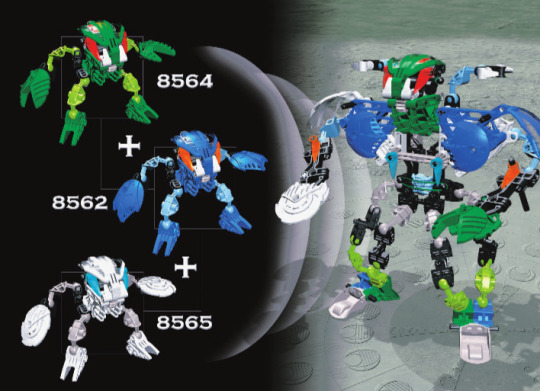
The combination of Lehvak, Gahlok, and Kohrak, the Ice Bohrok, which will be referred to as Kaita A, clearly just uses most of a Lehvak for its head. Its such a reuse that they literally just tell you to go back to earlier in the book and reread those instruction pages, rather than reprint them, as this part of the instructions was in Lehvak's book.
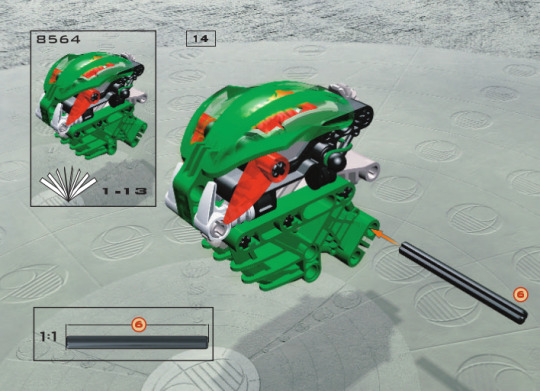
This has the result of the Kaita A instructions being 80% of a bohrok shorter than the other one, so they have more pages left than the other combiner!
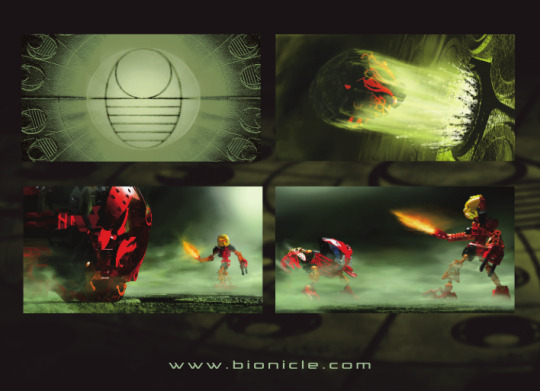
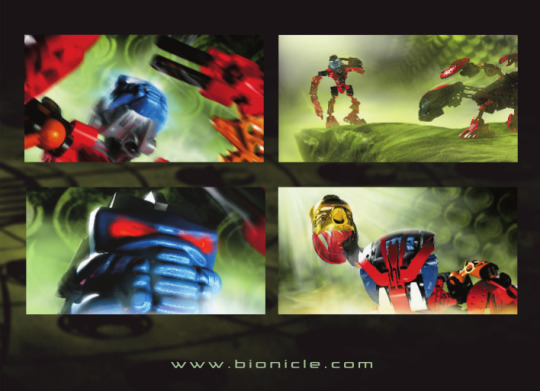
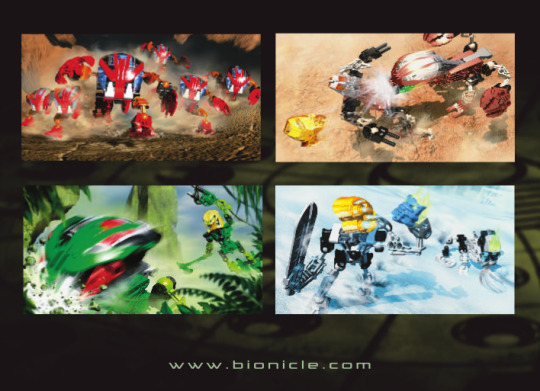
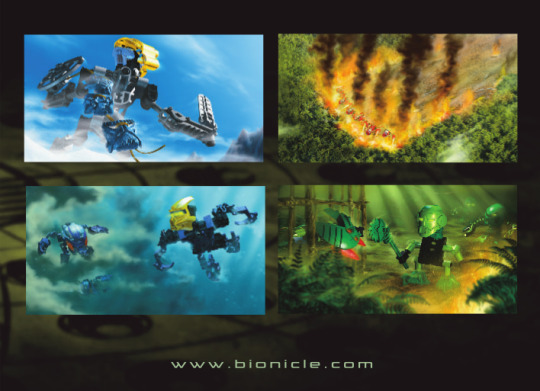
They make use of this with 4 pages with lots of nice story renders, 4 per page.
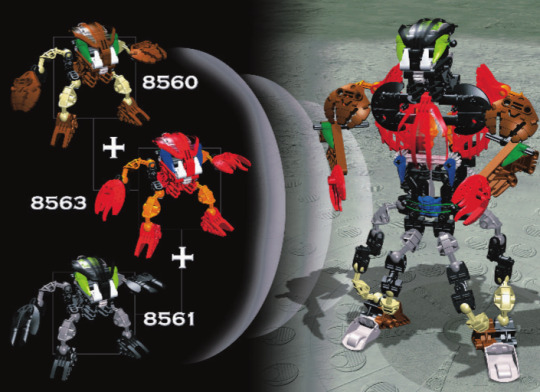
Now the second combiner, composed of Pahrak, Tahnok, and Nuhvok, referred to here as Kaita 1, has a bit of a difference. Much of the build of Kaitas A and 1 is identical, the main differences being in the arms and the upper torso. Kaita 1 also embeds Tahnok's face shield inside of Nuhvok's body.
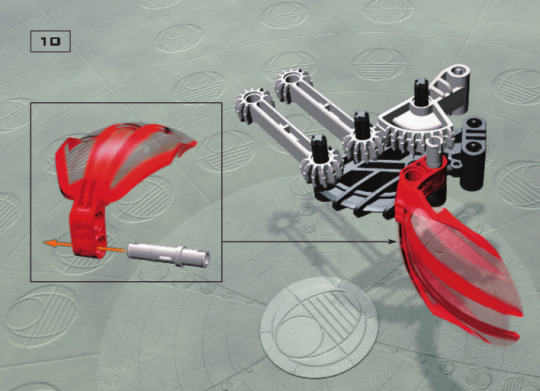
This means that they can't just reuse parts of the main Bohrok instructions like Kaita A, which leads to the instructions overall being longer. To keep things simple they most likely wanted the instructions for all 6 sets to be the same length, so this led to a reduction in the number of pages devoted to the story renders, having only two.
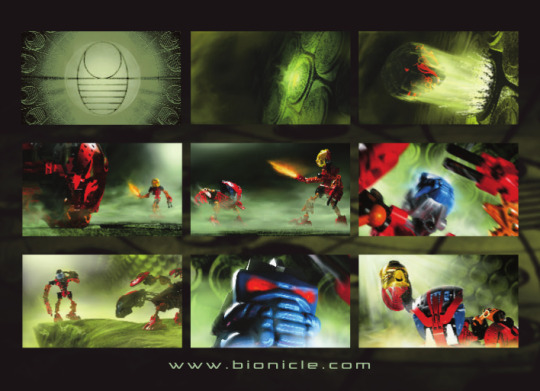
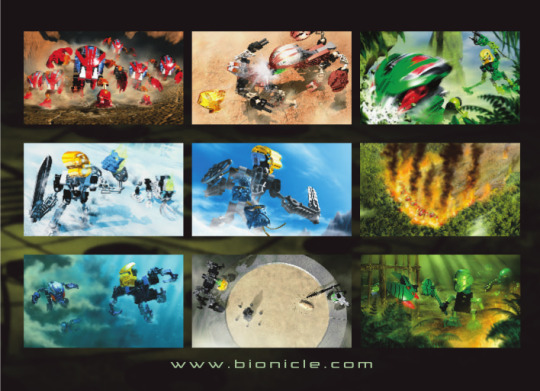
They're much smaller also, they manage to squeeze 9 per page compared to Kaita A's 4.
But you may notice something odd there. 4x4 is 16, but 9x2 is 18!
That's right, despite having smaller images overall, and less pages, the Kaita 1 instructions actually contain MORE images. The hive cell about to burst and Onua and Whenua meeting at the Amaja Nui are exclusive to these two books.
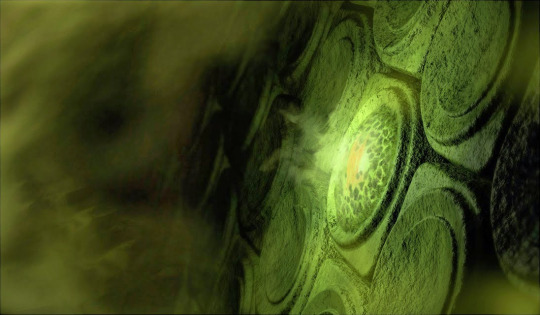
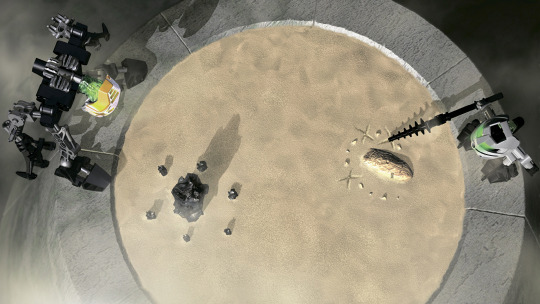
Yes I said two. For poor Nuhvok, after the first two books cover the legs and head, has to show everything else, and thus only gets a single page of renders.
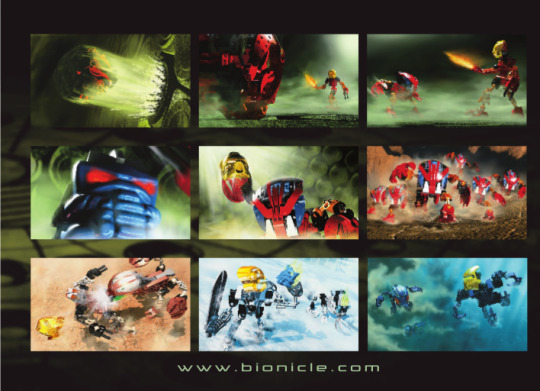
It shares the same format as the others of Kaita 1, but is super abbreviated.
So on this day let us all take a moment to appreciate little Nuhvok, the Bohrok that had to shoulder the bulk of its Kaita instructions due to the addition of a silly little bib, and as a consequence contained the least story renders of any of them.
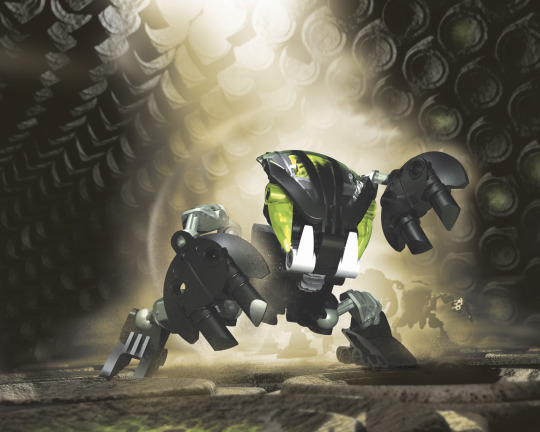
#Bionicle#Instructions#This isn't really a joke#How much detail is too much detail#Version Differences
61 notes
·
View notes
Text
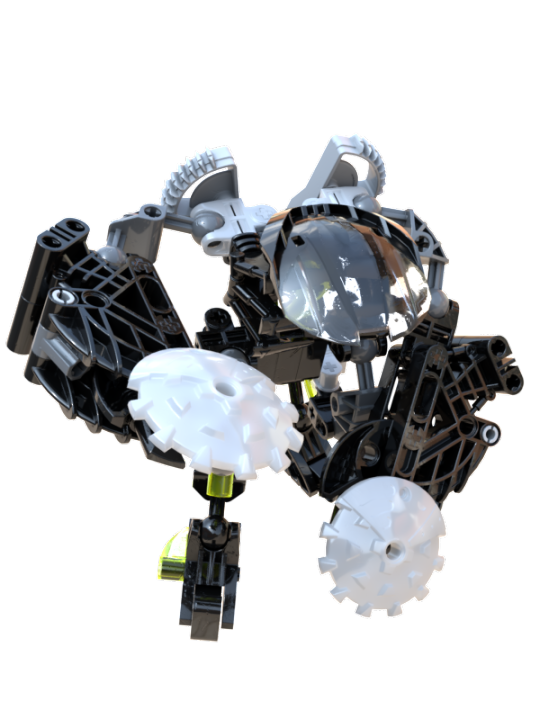

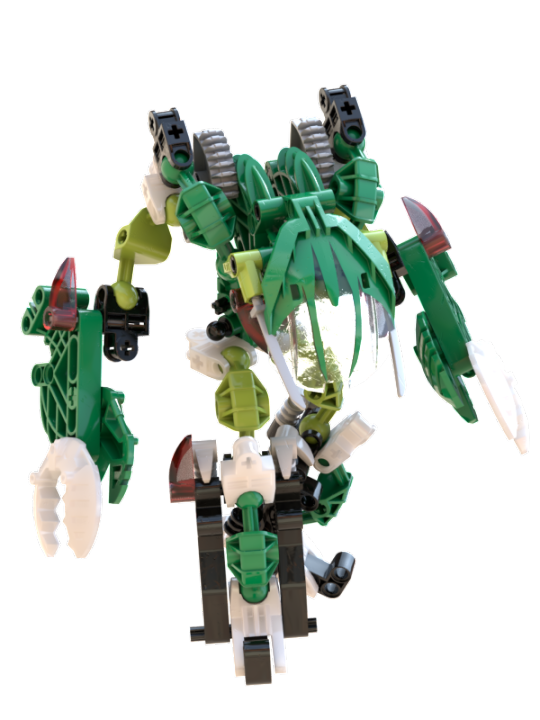

a couple of bohrok kaita made from all 3 bohrok of that colour, I should make the other 4
also usin these as build up towards the big one
125 notes
·
View notes
Text
Episode 9: Processed Bionicle Podcast Product
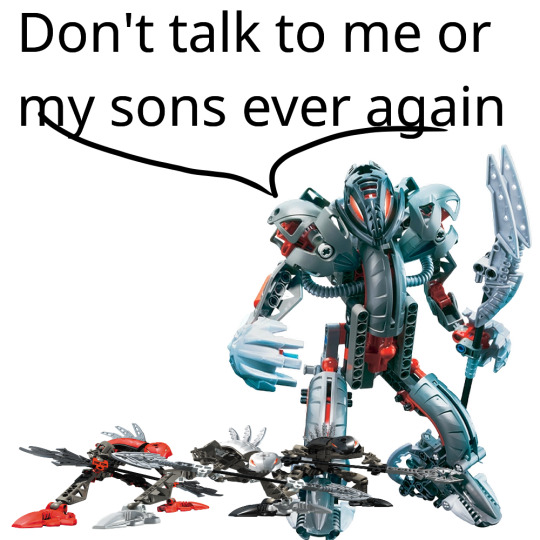
iTunes
Podcasting Tea
Podcast Sacrifices
Lime Plastic Disease
Do Matoran Make Straw?
Toa Kiryuu
I’m Taking the Bohrok Away Until You Guys Calm Down
Not a Hoax, Not a Dream, Not an Imaginary Tale!
Autistic Queen Gahlok-Kal
Onua’s Homophobic Moment
Emma Shares Lewa’s Kink
Bohrok School (We realized after recording that it's chronologically possible that tunnel-based artist Jordenn Yo from Christopher Priest's The Islanders is named after the Krana Yo. This is mostly Nausicaä doing a propaganda post for The Islanders.
The Fascinations
Three-Minute Utena Digression
Metru Nui Samizdat
Sterling Silver Krana-Kal
Your Inner Child Would Die in a Dahlian Morality Tale
Backpack For His Kanohi
Bionicle Lore Angel of Conception
The Bohrok-Kal Make Shitty Puns
Processed Bionicle Podcast Product (American Cheese tutorial)
Wu Wei
Bionicle-Ass Art
The Bionicle Definition of Life
Mata Nui’s Malicious Nephews
The Unstoppable Bohrok Kaita Kal
“What the Fuck, Tahu, That’s the Vahi!”
The ULTIMATE Bionicle Bash
Takanuva Christology
Our Apologies to the People of Denmark
Makuta’s Wonderful Large Sons
Guuhrak’s Job at Apple
Six-Guy Clusters
Weak Point Powers
Homoerotic Makuta Narration
The Vore Rahkshi
Velveteen’s Posting Crimes
Makuta’s Commitment to Being a Sicko as Evidenced by the Rahkshi Life Cycle
Whenua’s Fucked-Up Rahkshi Wall
Extremely Loud and Incredibly Wet
Emma Has a Genuine Faith Moment Thanks to Kopaka
The Parents of the Bionicle Sweepstakes Winners
The Infinite Likability of the Christ Figure
44 notes
·
View notes
Text
See, I think this is the most boring answer, but also the simplest and probably the most likely.
Personally I've never liked the idea of Akamai and Wairuha being something special compared to other Kaita, or of them existing independently of their component Toa (Vakama had several visions wherein other beings spoke directly to him. Lhikan, Nidhiki, Dume, the other Toa Metru. But he wasn't receiving messages from their spirits, he was just having a vision. Why should Gali and Kopaka's visions be any different?) because really why should they? What about them specifically justifies them being somehow superior to all other Kaita?
The answer of course is that they got sets :P That's really all it takes.
I still disagree that the Toa Mata's disagreements justify anything, their ability to set their differences aside to join together for a greater purpose has kind of always been their Whole Thing. I really do think their Unity is stronger and more key to their characters than their arguments, and I don't believe special Kaita spirits are necessary to hold the fusions together in the face of the Mata's radically different personalities. They can do it on their own, they're capable.
Aside from that though, I think you're probably absolutely right :/ Especially considering every other Kaita we see in the story. Sure Akamai and Wairuha are the only Toa Kaita we see, but we also see Bohrok-Kal Kaita and Rahkshi Kaita, and those don't have their own names, let alone titles, they're just named after the Krana-Kal/Kraata that controls them. I suspect that other Toa Kaita are much the same. They likely don't even have names, much like the Matoran Kaita combo models, they're just fusions governed by the combined mental processes of their constituent Toa, likely behaving much like the Matoran Nui in Trial by Fire, obviously a higher consciousness, but not really a unique individual. Akamai and Wairuha though were likely planned and created specifically as the Spirits of Valour and Wisdom and preprogrammed into the Toa Mata as the most powerful fusions possible.
I do think if we'd seen other Toa Kaita later in the story, they would have gotten their own names and titles and been treated as characters on the same level as Akamai and Wairuha, but because that never happened, I think this option is the most straightforward and thus likely.
I am plagued by thoughts of Toa Kaita and how their names and titles are determined.
Is every single one unique? That leaves the most room for creativity, and means the result of each fusion is dependent on the personalities of the individual Toa components, which seems like the most narratively satisfying option. But also, if every possible Kaita is unique, how do they avoid overlapping domains? Eventually Valour or Wisdom are going to be really fitting for some other combination of three Toa, or they'll just run out of fancy mental concepts to name themselves after.
Alternatively, do the names, or maybe just the titles, of any given Toa Kaita, depend on the elemental combination used to form them? Does every instance of Ta-Toa+Po-Toa+Onu-Toa result in Akamai? Does every instance of Ga-Toa+Ko-Toa+Le-Toa result in a Toa of Wisdom? I went and learned some math specifically to determine that there are 560 different possible 3-element combinations that can be formed from the 16 Toa elements, assuming all three have to be different, because that makes the most sense to me. 546 if Light and Shadow could not coexist within a single Kaita for some reason, and 455 if you don't count Shadow at all. Those are still really big numbers! But it seems a lot more feasible to come up with 500-ish attributes for each combination to represent than for each of the infinite combinations of individuals to result in something completely unique. But then again, it seems awfully limiting to simply assign a default attribute based on elemental alignment without taking into account the personalities of the constituent Toa at all. Would Vakama, Onewa, and Whenua really result in a Valour combination rather than something more tailored to them? Could Tuyet and Nidhiki really be part of a Wisdom combination?
Then perhaps there is a set number of possible Kaita and which of the limited (but likely still beyond extensive) list of possibilities the fusion forms is dependent on the three Toa's personalities? That feels like it's getting dangerously close to personality-based categorization though, and I've seen enough bad YA to know that's never a good idea.
Is any of this important at all? Oh no, not at all, we only ever see two Toa Kaita in the entire story and even they barely matter, this absolutely isn't the sort of thing that needs to be thought about deeply at all. But here I am, distracted by it anyway.
#bionicle#toa kaita#i've had a difficult day#so if this and my last post just sound like me bitching#i am sorry#it's so not the fault of the people i'm replying to#i'm just complaining to vent
49 notes
·
View notes
Text
After I gave the bohrok kal Kaita a poor review, I’ve been told that the original bohrok Kaita were better. I had nothing to do so I gave them a quick build using my bohrok kal and...
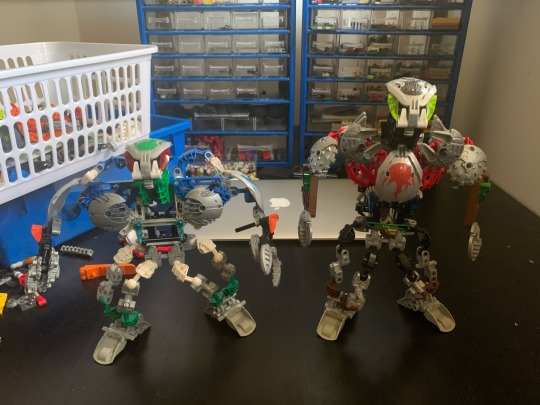
My god
These are so much better!
7/10!
They actually don’t look like shit! I think having the krana strapped to their crotch is hilarious and these two look decent. Sure they might look better with the classic bohrok colours but I’m not displeased with this. They have more articulation than any previous bionicle sets and even many later sets. Overall, I’m happy with these two. Might keep them like this for a few days.
13 notes
·
View notes
Text
BIONICLE ask game
I see a lot of ask games and I thought it would be fun to make a BIONICLE themed one, so here goes!
A. Favourites — in-universe
Favourite character?
Favourite hero?
Favourite villain?
Favourite Toa?
Favourite Matoran?
Favourite Turaga?
Favourite Toa team?
Favourite Matoran team?
Favourite villain team?
Favourite Toa Mata/Nuva?
Favourite Toa Metru?
Favourite Toa Mangai?
Favourite Toa Inika?
Favourite Rahaga?
Favourite Makuta?
Favourite Rahi?
Favourite Glatorian?
Favourite Agori?
Favourite Rahkshi?
Favourite Bohrok?
Favourite member of the Order of Mata Nui?
Favourite Dark Hunter?
Favourite Vahki?
Favourite Piraka?
Favourite Barraki?
Favourite Vhisorak?
Favourite Kaita?
Favourite location?
Favourite island?
Favourite Koro?
Favourite Wahi?
Favourite Metru?
Favourite element?
Favourite Kanohi power?
B. Favourites — out-of-universe
Favourite set?
Favourite canister set?
Favourite titan set?
Favourite play set?
Favourite combination model?
Favourite canister?
Favourite package design?
Favourite gear? (watches, pens, foam play tools, etc.)
Favourite storyline?
Favourite commercial?
Favourite online content?
Favourite digital game? (internet, console or PC)
Favourite analog game? (trading cards, board game, etc.)
Favourite theme?
Favourite year?
Favourite chapter book?
Favourite movie?
Favourite comic?
Favourite serial?
Favourite online episode?
Favourite Kanohi design?
Favourite soundtrack?
Favourite character in the Mata Nui alphabet?
Favourite character in the Voya Nui alphabet?
Favourite Greg Farshtey answer?
C. Fandom
Give me a headcanon for [character] (either provide a character or let the askee decide)
Show me an MOC!
Talk to me about [OC]! (either specify an OC or let the askee decide)
How did you get into BIONICLE?
Do you consider romance canon?
What character do you think is underrated?
Can you read the Matoran alphabet?
Which sets do you own?
Which sets do you want?
Unpopular opinion about the fandom
What character should have been given (another) physical set?
Opinion on Gen2
What do you think a hypothetical Gen3 should look like?
What do you think a continuation of Gen1 should look like?
If given the chance to decide on a new BIONICLE set, what would you pick?
What should a new BIONICLE movie be like? (story, setting, style, hand-drawn animation/live action/ CGI, etc.)
What should a BIONICLE television series look like?
What should a BIONICLE stage play look like?
What should a BIONICLE stage musical look like?
What should a new BIONICLE book look like?
What should a new BIONICLE comic look like?
What should a new BIONICLE digital game look like?
What should a new BIONICLE analog game look like?
Opinion on Scrunkly Tahu
Favourite fic
Favourite fic author
Favourite visual fanart
Favourite visual fan artist
Favourite fan soundtrack
Favourite fan composer
Favourite fanart (any category)
Favourite fan artist (any category)
Talk to me about your [fic/art]! (either specify a work or let the askee decide)
Talk to me about a WIP!
Damn this became a long list 👀💦 Feel free to reblog this or add on, I thought it could be a fun way to talk about our favourite LEGO theme! 🖤
103 notes
·
View notes
Text
All good thoughts! And I appreciate the overview of different places where larger numbers are calculated in the Bionicle corpus. Here are some additional ideas/responses:
Response 1:
I’m not personally convinced that any of the information from the imagery of the Great Telescope in MNOG escapes the “translation problem”. The 720x350 coordinate system that you note is explicitly a coordinate system for the panning limits of the flash game window. In MNOG, you have equal horizontal panning movement for most screens (that’s the 175 to -175 left-to-right axis), while vertical panning is fixed differently on some screens (the Great Mine has a larger vertical panning space as I recall--that’s the 220 to -500 axis). This seems pretty clearly to be in the same category as the Unix countdown.
More generally, evidence for the existence/non-existence of a counting system is better taken from patterns of numbers that show up in the culture and design of the world of the MU, rather than peripheral cases like coordinate systems in MNOG or postulates about how many fingers Spherus Magnans or MUans might have (and what numeral systems they might develop on the basis of those). This is exactly why many fans have speculated and/or headcanoned heximal systems for Matoran for a long time: the numerosities of 3 and 6 are particularly “special” in the MU and a wide variety of things are designed with 6 as the maximum (number of “primary elements”, 6 Metrus in Metru Nui, 6 breeds of Bohrok, Vahki, Visorak, 3 = Kaita, 6 = Nui, 6 Makoki Stones, 6 Keystones, 6 Barraki, etc.), whereas if the MU default counting system were decimal, we might expect something different from this. It's clear that the GBs didn't design the MU with 10 as their "default maximum" for a given sequence.
Response 2:
The point about the parallels between the Matoran numeral system and human positional notation systems like the Chinese counting rod system is well taken! One thing that should be pointed out, however, is that the Matoran system is actually different in an important way:
A counting rod system is explicitly intended to allow numbers to be read via simple addition. Each part of the number symbol has a consistent value: vertical lines mean “1″, horizontals mean “5″. If you were to forget what value a particular symbol represented, you could recover this information immediately by counting up the values of the lines in any given symbol. This also means that the symbol for 6 is essentially 5+1, the symbol for 7 is 5+2, 8 is 5+3, and 9 is 5+4. You can see the alignment of a system like this in the way that I’ve lined up the symbols below (6 parallels 1, 7 parallels 2, etc.).

The written Matoran numeral system is not like this! It is actually heximal in nature: Counting from 0 to 5, you have a system similar to the counting rod system (0 is 0, 1 adds a single line, 2 adds another line, etc.).
BUT THEN on the second iteration, an additional symbol-element is added (the extra inner circle). Crucially, this extra inner circle does not straightforwardly translate as something like ��value of 5″ like a counting rod system or something additive. If this were so, then the symbol for 6 would actually be like the symbol for 7 (double inner circle plus 1).
Instead, the inner circle actually represents a second iteration of the base number sequence. So 6 is actually a modified 0, 7 is a modified 1, 8 is a modified 2, etc. In other words, the extra inner circle represents 6 (the maximal base number) in the same way that an additional 1 at the start of the "tens" sequence (10, 11, 12, etc.) represents the maximal base number of 10 in base-10. This is exactly what you’d get in a base-6 number system--not a system that is counting up to some higher base value. Look at the alignment in the table below and compare it with the base-10 additive system above. See the difference?
The only issue (as noted in my previous reply) is that we are missing the last 2 symbols of the second heximal iteration.

I want this to be appreciated: Whether intentional or not on the part of whoever designed this written numeral system, it has replicated a pattern that would be expected in a heximal numeral system of counting--not necessarily a base-10 system! Imho, out of all the evidence reviewed so far, this seems like the most solid and concrete material on which to base a theory of Matoran numeral systems.
Edit: I should add that you could also use the graphemic form of the Matoran numeral system as evidence for a duodecimal (base-12) counting system. This would essentially treat the 0-9 sequence as a subpart of a larger 0-11 sequence, with 12 being the actual point of iteration. I don't think this is the most straightforward interpretation, however, given (a) the consistency of the parallels between 0 ~ 6, 1 ~ 7, etc. and (b) the already-noted significance of numbers like 3 and 6 (as a common default maximum) in the MU.
Question.
Would Matoran use base 6 number systems?
179 notes
·
View notes
Text
Kraata
In the years following Makuta’s awakening after the Great Cataclysm, he began studying into the very nature of the soul itself. His work as a Mask Maker alongside Ekimu had taught him that souls typically needed physical vessels in order to function; Otherwise, they would dissipate. It was the Masks of Power that acted as the necessary, physical interfaces needed to allow regular Okotans to control the life-force within them.
But Makuta was also well-aware of the Elemental Deities, as well as other Okotan gods; Beings of energy, incorporeal, who did not need to rely on a physical vessel to ground and contain them. Their very beings were fluid and able to master their own essence as a result of it, and it was this incorporeal nature that allowed Deities to fuse with the souls of hosts, creating a Kaita fusion.
Inevitably, Makuta desired to test his limits and see if he could create his own ‘gods’; After all, he was supposed to take his rightful place among them eventually. Thus, while many Masks of Power that he gathered were used to reactivate the Great Forge, or for other practical reasons… Makuta kept aside a few for the purpose of experimentation.
Makuta already knew it was possible to isolate the soul, and had already done so with pieces of his own life-force. One of his Forbidden Masks enabled a user to separate their soul from their own body and move beyond it, even if the connection between the two still existed. Thus, Makuta began to speculate; Was it possible for living beings to transcend their physical forms? To shed aside their material vessels, and ascend as their own souls become powerful enough to exist on their own, without anything solid or definable needed to ground them?
Makuta set to work experimenting on the concept of ‘ascension’, opting for Masks of Power; While they were far rarer than an Okotan, a Mask of Power also had more energy within its ‘soul’ than that of an Okotan’s, and was thus more viable for ascension than a mere mortal. After all, mortals could not warp reality the way a Mask of Power could, and many of them had abilities modeled directly after Okotan Deities, with their Mask-features designed after the very faces of said deities. By wearing a Mask of Power, an Okotan wore the ‘face’ of a deity and accessed a power identical, yet lesser, to theirs; One linked to their soul…
In essence, someone using a Mask of Power was comparable to a Kaita Fusion, just on a far smaller scale. By this logic, Makuta deduced that if he could accomplish this alone, then it was only a matter of time before he began to reach the ascension of an Okotan Deity, or at least something similar and adequate. Thus he conducted his first experiments with the simplest of Masks, Masks of Power that gave control over one of the six primordial elements; The Elemental Deities were the first gods to form, so it made sense that Masks of simpler elements would be the easiest to ascend.
Decades of experimentation yielded multiple failures, and several Masks of Power were destroyed and their energies released wastefully. Attempts to preserve the ‘soul’ of a Mask of Power required a physical vessel to actually contain it, which in turn marred the entire point of ascension to begin with.
But somewhere along the way, Makuta kept to his studies, and with his son Fenrakk providing a ready supply of life-energy with his Skull Spiders, he was finally able to devise something; A powerful artifact, an automaton capable of converting a Mask of Power, shattering its physical vessel, and with additional amounts of the appropriate Life Energy… This artifact could enable a Mask of Power to ascend into something else; A serpentine being of pure energy, of Power…
This entity was dubbed a Power Serpent, and as anticipated, it had retained the exact abilities it had as a Mask of Power, specifically those of Fire, but was now able to utilize them without requiring the grounding power of a user. This Power Serpent had an inferior mind, however; As Makuta had deduced, a being with a soul superior to that of an Okotan would naturally form sentience, but it seems that his experiments merely yielded an entity with the mere beginnings of sapience. Nevertheless, he knew that more life-energy to a soul typically meant a greater mind- Animals had weaker souls than Okotans, after all.
The solution would be more energy; And to remedy thisandcreate a being loyal to him, Makuta provided the necessary energy by bonding a portion of his own soul to the Power Serpent. This granted the Power Serpent a personality, and actual sapience; Developing a will of its own and self-awareness, it was already capable of speech and complex thought thanks to Makuta’s own memories. Triumphant, Makuta dubbed the progenitor of a planned line of Power Serpents, and the next of his own children, ‘Kratakal’.
After Kratakal’s creation, Makuta set to work on streamlining and perfecting the process of creating Power Serpents from Masks of Power. More Power Serpents came into being, each equipped with a certain level of sentience, able to understand commands and obey them, as well as strategize to an extent; But it might not have been proper to outright call them self-aware. Regardless, Makuta only needed one example of sapience to prove his capabilities, as completely obedient beings were more his forte when it came to the Brotherhood.
Initially, Makuta began crafting Power Serpents from just single-element Masks of Power, but inevitably he became more ambitious and began ascending more complex Masks. Masks of Strength and Speed were among the next, eventually followed by those such as Shielding, Stealth, Fusion, and so forth. Makuta debated sacrificing one of his Forbidden Masks to create a Power Serpent, but never got the chance;
Being a reflection of one aspect of his soul, Kratakal himself eventually grew rebellious and desired more for himself. After having been granted an impervious, bohrok body to enhance his own abilities, Kratakal eventually defected from the Brotherhood of Makuta, taking with him the artifact needed to convert Masks of Power into Power Serpents, as well as bringing the rest of his kind with him; Though lacking imagination and typically loyal to Makuta, Kratakal himself had inherited his father’s own charisma and utilized it well.
With control over all Power Serpents and the only effective means of creating them in his grasp, Kratakal travelled over to the island of Xia, bringing his brethren along with him. To spite Makuta and spread his own name, Kratakal renamed the Power Serpents after himself, rechristening them as ‘Kraata’. The Kraata and their fantastical powers and abilities were introduced to the Xians, and through collaboration and a few business deals, Kratakal himself ascended to eternal fame amongst all of Xia. Likewise, he somehow managed to figure out how to create more Kraata, despite not having access to other Masks of Power. Subsequent generations of Kraata were sold to various Xian corporations, and studies on them with information provided by Kratakal resulted in the invention of Exo-Toa technologies.
Makuta himself was deeply insulted and incensed at this appropriation of his creations, and the renaming of them struck him hard. The situation reminded him intimately of how he felt when people began to call his brother Ekimu the superior Mask Maker, making Makuta feel as if his own hard work and legacy was being taken from him…
As of now, at least hundreds of Kraata exist, with all of them present and operating on Xia. Kratakal commands control over the largest portion of these Kraata as the Lord of Kraata (or Lord of Power Serpents, as Makuta still insists on calling them). For the most part, he only uses his Kraata for mundane purposes, such as his films, reality TV shows, and so forth, but they also function as powerful body guards as well, and can be used to take out anyone the Rahkshi is displeased with.
Both for profit and also as deliberate spite towards Makuta, Kratakal has sold several Kraata to various Xian corporations and arms manufacturers, as well as the esteemed Nynrah Ghosts. Per his orders, Kraata sold to new owners become loyal to them, although it is not out of the question for Kratakal to re-induct a sold Kraata back into his army. Kraata are amongst the most expensive of any Xian product, costing at least millions for just one; And the more desired or rarer a certain power of Kraata is, the higher the price it’ll fetch.
While some Xians use their purchased Kraata for personal, individual reasons, the vast majority of those sold are utilized in warfare and combat, or else studied and experimented on my arms manufacturers and the Nynrah Ghosts. It was Kraata that were used to help the rogue Spiriah in his experiments on Life Energy, and in various regions of Zakaz they are regarded almost as terrifying, inexplicable entities by soldiers who encountered them in the battlefield. For others, however, they are a mere source of energy, only capable of basic loyalty like any AI, and often utilized in conjunction with an Exo-Toa model.
Kraata are generally about the length of a human arm, but this can vary. They are beings of pure, glowing energy, constantly emitting bright light, and they take serpentine forms that can weave through the air with ease. Along their length are spines and patterns, and each Kraata’s form ends in a narrow head. The exact appearance of a Kraata depends on the Mask of Power used for it; The detailed shape of their features and bodies bears resemblance to the original appearance of the Mask of Power they ascended from, and as a result a seasoned expert can immediately deduce the power of a Kraata just by its mere appearance alone. Additionally, the colors of a Kraata vary as well, being dependent on the Mask of Power they were born from; Some glow with a violet hue, while others are scarlet mixed with azure. The exact color, or combination of them, is dependent and selective to their original base form.
As mentioned before, the abilities of a Kraata are identical to the Mask of Power they were birthed from; A Kraata of Healing can mend most injuries, a Kraata of Strength can slam forward with incredible force, and a Kraata of Elasticity can stretch its soul impossibly far. Due to their incorporeal, spirit-like nature, Kraata do not require sustenance, nor do they produce waste; They simply exist indefinitely, levitating in place and floating around. Depending on their ability, a Kraata can tramist their Power through bolts of energy; Touching a Kraata can result in one being badly burned by the concentrated life-force they are comprised of.
Kraata are sentient, and like basic AI, can understand orders, formulate basic strategies, investigate when necessary, and so forth. Their sapience is questionable, but they clearly understand what others tell them to do, meaning their intelligence is at least indisputable. By default, Kraata are loyal to their creator; First Makuta, but eventually Kratakal. By Kratakal’s orders, they will acclimate to new owners as commanded and listen to them; And in turn, their new owners can have them obey another person, and so forth.
They have a basic understanding of authority and hierarchies and will listen to them without fail; Kraata lack fear or any emotions, it seems, nor do they seem to possess a will. The sole exception lies in their progenitor Kratakal, who has a portion of Makuta’s soul; And while Kraata typically do not betray their masters, it seems that Kratakal’s kinship with them, as well as his own charisma and possession of their original maker’s spirit –thus granting Kratakal a similar ‘presence’ to Makuta- allowed him to sway the Power Serpents over to his side.
#bionicle#bionicle rae#kraata#makuta#brotherhood of makuta#kraata kal#kratakal#power serpents#masks of power#kanohi#xia#vortixx#exo toa
5 notes
·
View notes
Audio
My attempt at @outofgloom‘s Bionicle accent challenge!
(Yes, I know, super late to this party, but I’ve been off Tumblr for a while and rediscovered my old microphone at my parents house on my holidays and thought I’d better make use of it)
Anyway, here’s the full text for anyone else wanting to have a go.
Toa Rahi Tahu Gali Lewa Kopaka Onua Pohatu Lhikan Kanohi Vahi Hau Kaukau Miru Akaku Pakari Kakama Ignika Kraahkan Rahkshi Bohrok Mata Nui Makuta Teridax Metru Nui Aqua Magna Spherus Magna Karda Nui Mangaia Matoran Keetongu Kikinalo Protodermis Tahtorak Visorak Akilini Ehrye Ngalawa Nuhrii Oohnorak Orkahm Spiriah Tiribomba
Ivaha vahai, Mata Nui ini-wahi uvoyanu; Artakhai ako Ki Matoran iroha-pa karaya… O kaitakhu no maitakhu-nu, Ta Mata Nui ahaumu-ho ako takayanu: Kaita, Maita, Vaita…
(In the Time Before Time, The Great Spirit descended from the heavens, Carrying we, the ones called the Matoran, To this paradise… We were separate and without purpose, So the Great Spirit illuminated us With the Three Virtues: Unity, Duty, and Destiny… )
49 notes
·
View notes
Photo
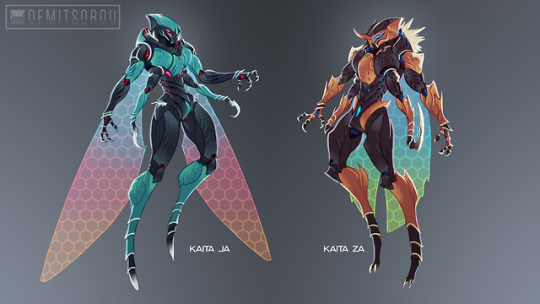
Bohrok Kaita. (they/them for both)
I imagine Kaita, as well as Bohrok-Kal and Kaita Kal look less like true insects (compared to how i did the regular bohrok breeds), and more ‘ascended’, especially the Kaita.
#biomechanical#biomech#cyborg#robot#monster#bohrok#kaita#fusion#ja#za#kaita ja#kaita za#2014-2018-demitsorou-art
517 notes
·
View notes
Note
bionicle for the fandom ask
Favorite character: Tahu. Mostly because of nostalgia but he was my first Toa.
Most relatable character: Takua pre Mask of Light, later pretty much all of the Inika post Inika/Mahri transformations
Most underrated character: Kopeke because I think he rescued Takua in Ko Koro if I remember? A minor thing but he was neat.
Most overrated character: Vakama and Takanuva. Also Roodaka for infamous reasons.
Least favorite character: Brutaka for one-shotting the Toa Mata.
Favorite pairing: Tahu/Gali. Hewkii/Macku.
Least favorite pairing: Wait, romance is canon in Bionicle? (It’s really Vakama/anybody or Nidhiki/anybody).
Favorite part/moment: When the Toa Mata Gattai into the Kaita against the Manas, when the Toa get the Exo Toa Armor, when the Toa Mata do a Final Dynamic Special on Makuta, when Tahu uses the Vahi and then the Toa Nuva turn the Bohrok Kal’s powers on them. When the Rahkshi appeared. When the Inika appeared. When Brutaka and Axxon had a bara struggle. When Commander Micheal Wharf Dorn voiced Mata Nui.
Least favorite part/moment: Any fucking time Greg F pandered to the Metru or Inika after subsequently dragging the Toa Mata across fields and fields of broken glass having them job to the Piraka and THEN to Brutaka and then after that he tried to make Kopaka look cool by having him beat up Matoran who were attacking him. Blarg.And then when the Toa Mata came back, the revival sets looked like garbage. At least G2 had decent re-imaginings of them while it lasted.
What about it got my attention: LEGO MAGIC TECHNIC ROBOTS
What about it kept my attention: Lore and worldbuilding out the butt. And the music and the first online game was so good.
Overall opinion: Bionicle is one of those things you had to experience as a kid to get deeply into or at least to be deeply catered to. It’s a good fantasy world and you can literally build your OC’s. I’m very glad it was part of my childhood.
4 notes
·
View notes
Text
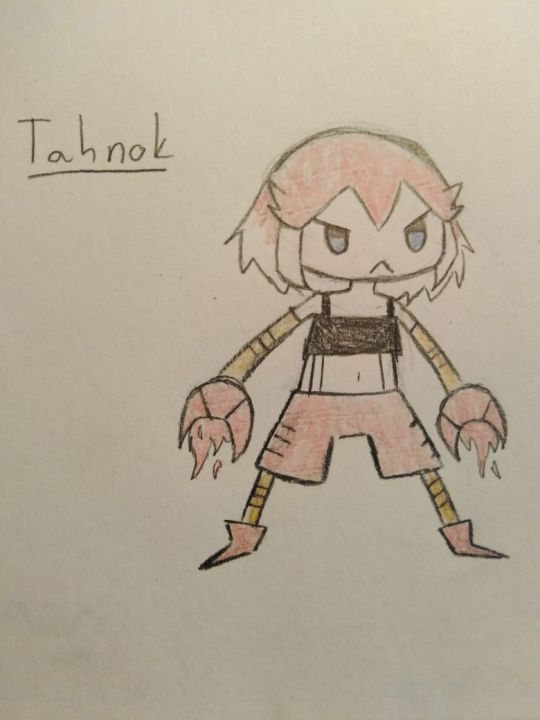
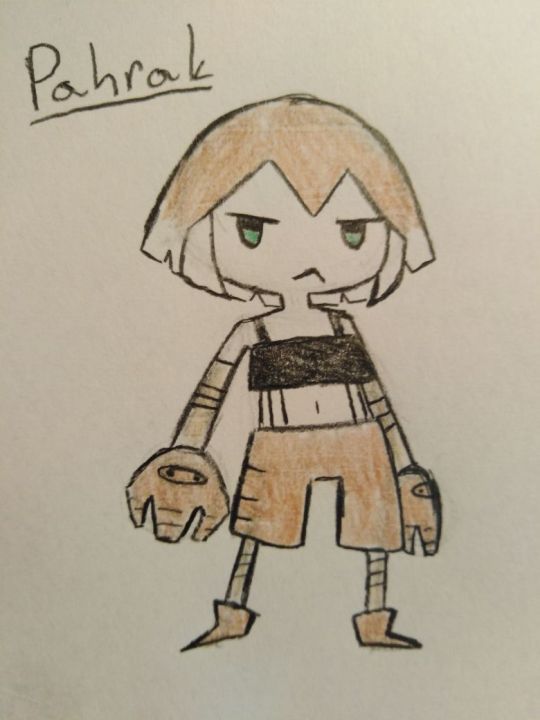
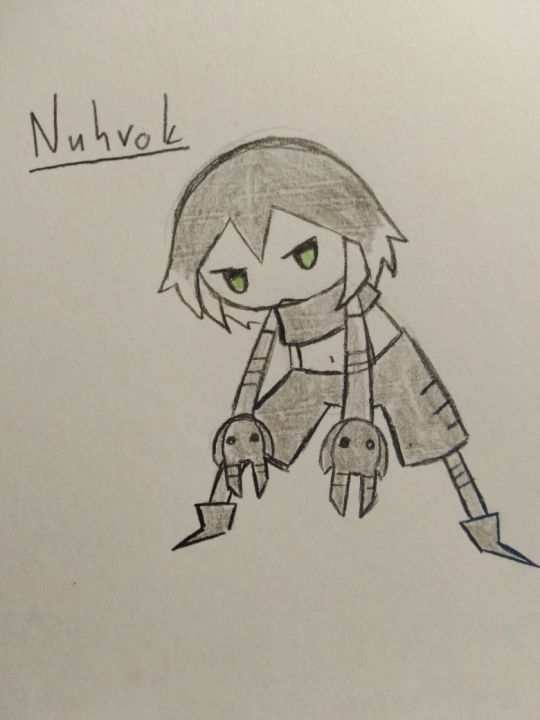
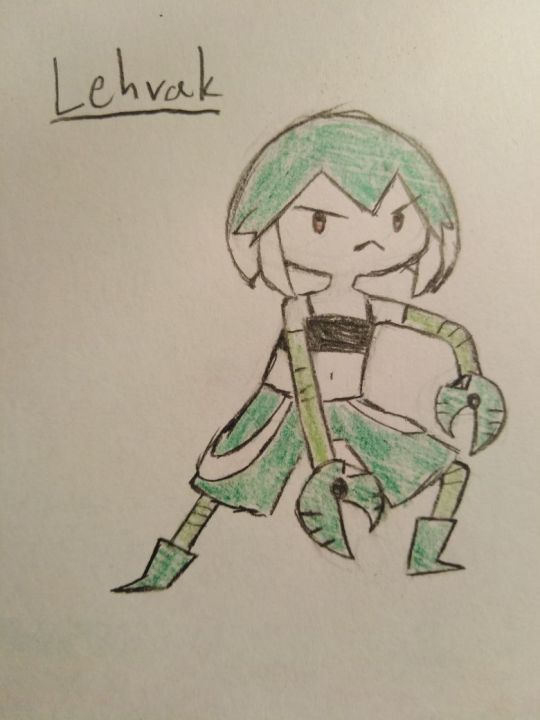
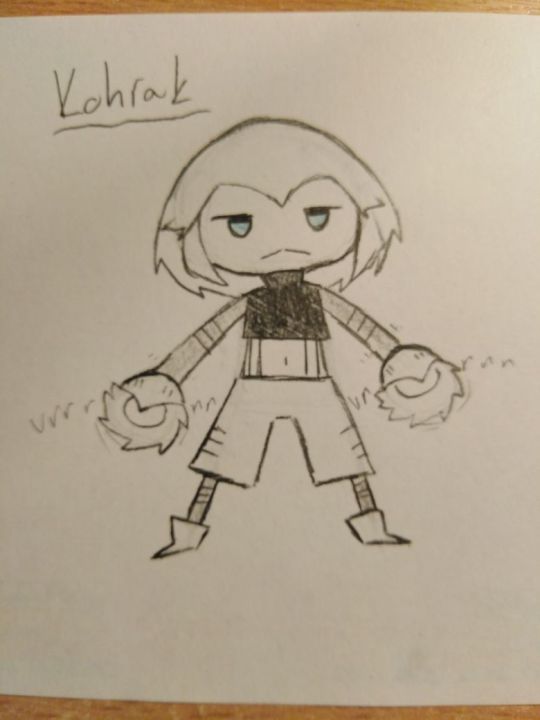
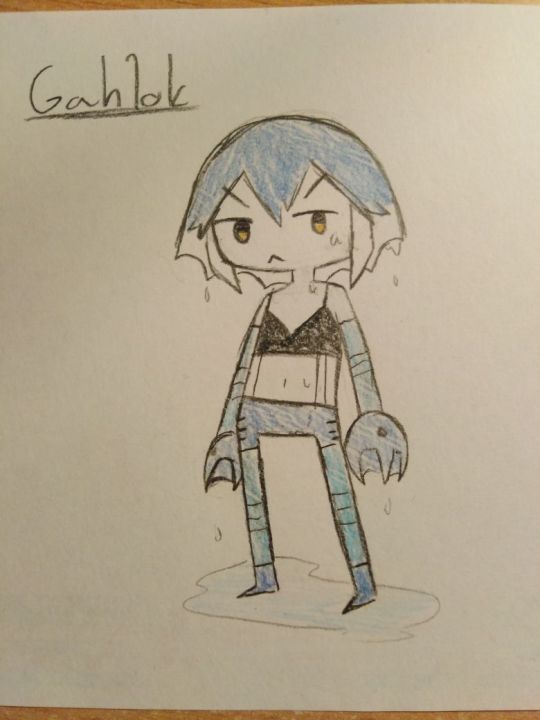
back to turnin bonkles into anime
bonus:


42 notes
·
View notes
Note
You wouldn't happen to know where I could find that weird video of the dancing Bohrok Kaita, would you?
how could I ever forget?
https://www.youtube.com/watch?v=ROOn5qs3FI4
50 notes
·
View notes
Text
Bohrok Va
The Bohrok Va are smaller model of machine that serves in the Bohrok swarm, acting as scouts and couriers. They are much smaller than the Bohrok, and have a different body plan. They cannot curl themselves into spheres, but can fold into a compacted state. They are not run by Krana, but run by independent programming. This allows them to remain active after the Bahrag have been compromised and deliver aid to the Bohrok-Kal.
The primary function of the Bohrok Va is to carry and relay different Krana between Bohrok. This covers replacing stolen Krana, switching varieties to grant different powers, and retaking captured Krana. These involves a lot of travel between the swarms and the nests, which may allow opponents to locate the nests. The Bohrok Va also act as scouts, traveling ahead of the swarm to survey the lay of the land. They are deployed well in advance of the release of the swarms to help the Bahrag calculate their strategy.
There is a model of Bohrok Va for each breed of Bohrok. Each model has its own differing behaviour to serve its swarm. They also have differing tools, which are mostly for mobility purposes. Few bother to put up a fight when threatened, and prefer to either retreat or hide. If worse comes to worse, they can form Kaita to fend off attackers.
38 notes
·
View notes
Text
Those were just the 2003 ones. Here's some more from 2002.

"Fusion Bohrok"
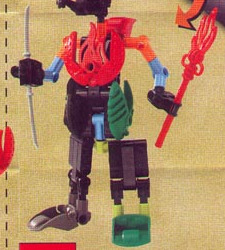


The Bohrok Kal Kaita
And some Gen 2 ones:

Gabriel Ultrakill "Special kopaka"

"Special Tahu"


"TwoToa" 1 and 2

"Powered-Up Umarak"
Obscure Bionicle combiners I didn't know about until right now.

Inspirational Model #1/フーラーク/"Fuurahk"

Inspirational Model #2/ライラーク/"Lairahk"

Inspirational Model #3/ボロック・サル/"Bohrok Monkeys"

Inspirational Model #4/タフーナイト・ボルケーノ/"Volcano Knight Tahu"

"Ultra Rahkshi"

格闘型ラクシ/"Fighting Type Rahkshi"

水中戦闘型ラクシ/"Underwater Combat Type Rahkshi"
291 notes
·
View notes